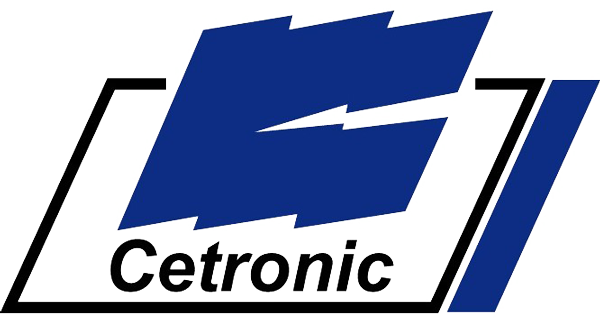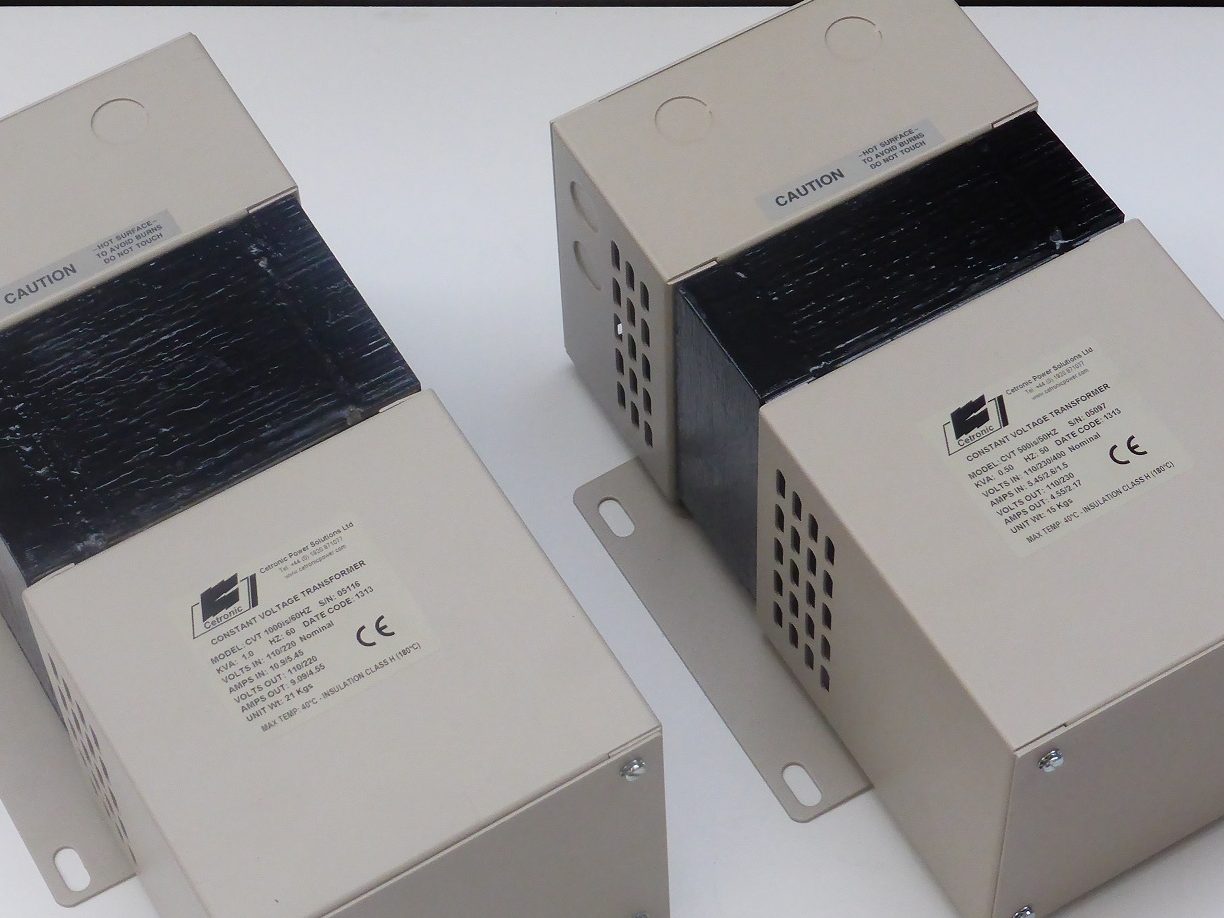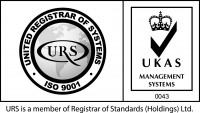If you have any specific questions related to CVTs or need further information, feel free to contact us about your questions or queries.
We typically supply 250VA - 45kVA Constant Voltage Transformers with Ferro-resonant Technology. Our data sheet for CVTs is available to download.
Types of Constant Voltage Transformers (CVTs)
Constant Voltage Transformers (CVTs) are used to provide a stable output voltage during voltage/power fluctuations in the input voltage. There are a few different types of CVTs, each with its own design and characteristics:
- Ferroresonant Transformer (Ferroresonant CVT): This is the most common type of CVT. It makes use of the characteristics of a magnetic core to provide a nearly constant output voltage. It consists of a primary winding, a secondary winding, and a tertiary winding. The tertiary winding is connected in parallel with a capacitor, creating a resonant circuit. This circuit adjusts to maintain a constant output voltage even when the input voltage varies.
- Electro-Magnetic CVT: This type of CVT uses multiple electromagnetic coils to provide a constant output voltage. The coils are arranged in such a way that they compensate for variations in the input voltage by adjusting the output voltage.
- Static Voltage Regulator (SVR): SVRs are often used for the same purpose, being, maintaining a constant output voltage. They use semiconductor devices, such as thyristors or transistors, to regulate the output voltage electronically. SVRs are known for their speed and precision in voltage regulation.
- Electro-Mechanical CVT: These CVTs use a combination of mechanical and electrical components to stabilise the output voltage. They often involve mechanical linkages or gears that adjust the transformer's internal configuration based on input voltage changes.
- Hybrid CVT: Some modern CVTs combine elements of both ferroresonant and electronic voltage regulation to provide a stable output voltage. These hybrids can offer improved performance and efficiency compared to traditional CVTs.
The choice of CVT type depends on factors such as the specific application you are using it for, your required voltage regulation precision, load capacity, and cost considerations. Each type has its advantages and disadvantages, and selecting the right one is crucial to ensuring a stable power supply in various electrical systems.
Advantages of Each CVT
Ferroresonant Transformer (Ferroresonant CVT): Line Noise Filtering, Electrical Isolation, Sinusoidal Output Waveform, and Fast Response to Input Voltage Changes
Electro-Magnetic CVT: Precise Voltage Regulation, Electrical Isolation, and Compatibility
Static Voltage Regulator (SVR): Electronic Regulation, Fast Response, Precise Voltage Regulation, Wide Input Voltage Range, Remote Monitoring and No Mechanical Wear
Electro-Mechanical CVT: Reliability, Energy Efficient, Sine Wave Output, and Precise Voltage Regulation
Hybrid CVT: Electronic Fine-Tuning, Mechanical Regulation, Voltage Sensing, Efficient and reliable
Each type of CVT has its own unique advantages, for further information about our CVTs please contact us.






